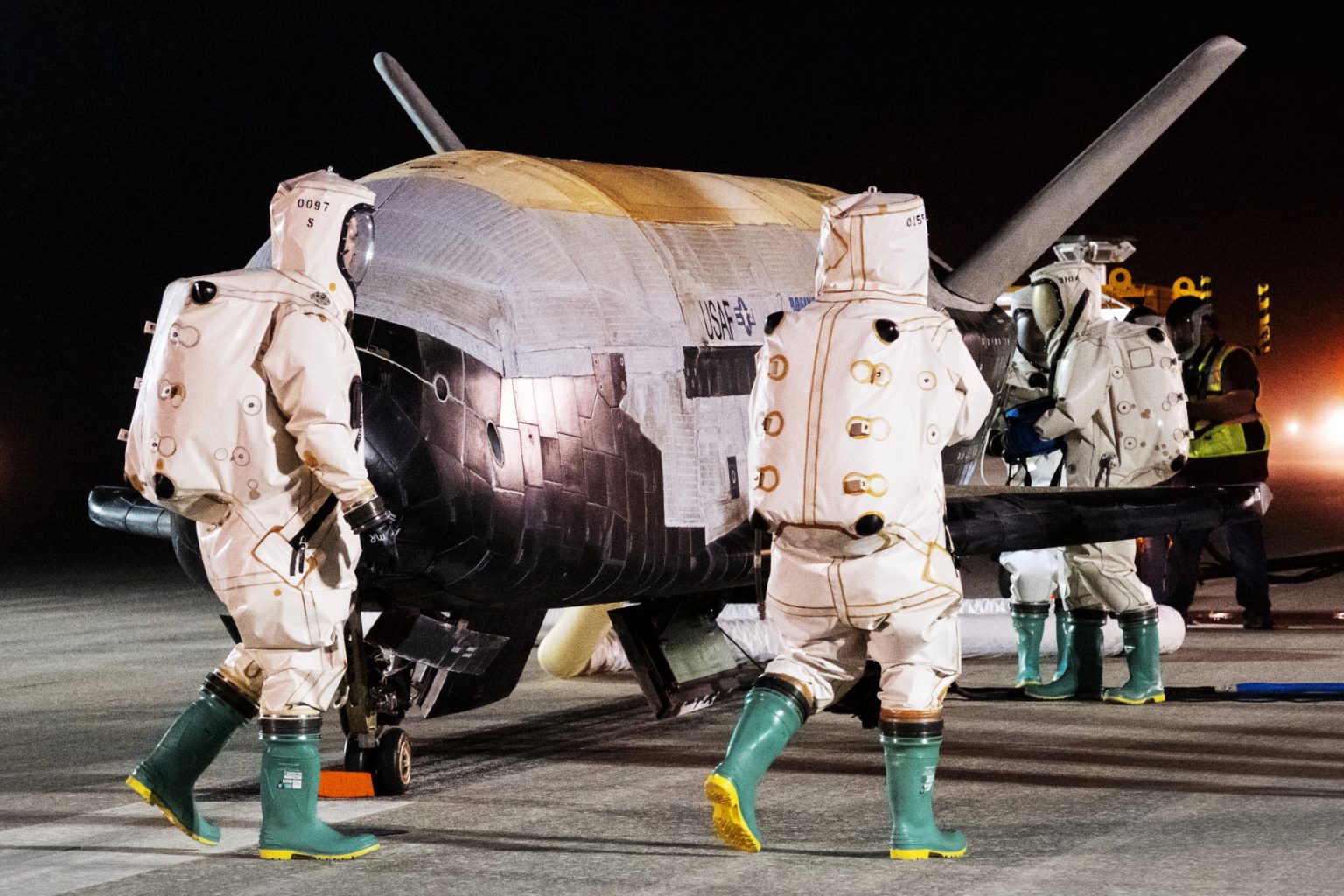The Boeing-built X-37B Orbital Test Vehicle
(OTV) set a new endurance record after spending 908 days on orbit
before landing at NASA’s Kennedy Space Center in Florida at 05:22
ET on 12 November 2022, surpassing its previous record of 780 days
on-orbit.
With the successful completion of its sixth
mission, the reusable spaceplane has now flown over 1.3 billion
miles and spent a total of 3,774 days in space where it conducts
experiments for government and industry partners with the ability
to return them to Earth for evaluation.
For the first time,
the vehicle carried a service module to augment the number of
payloads it can haul. The module separated from the OTV prior to
de-orbiting ensuring a safe and successful landing.
“This
mission highlights the Space Force’s focus on collaboration in
space exploration and expanding low-cost access to space for our
partners, within and outside of the Department of the Air Force
(DAF),” said Gen. Chance Saltzman, Chief of Space Operations.
The sixth mission was launched atop a United Launch Alliance
Atlas V rocket from Cape Canaveral Space Force Station in May
2020.
Hosted experiments included a solar energy experiment
designed by the Naval Research Lab, as well as a satellite
designed and built by cadets at the U.S. Air Force Academy in
partnership with the Air Force Research Laboratory. The satellite,
dubbed FalconSat-8, was successfully deployed in October 2021 and
remains on orbit today.
This mission also hosted multiple
NASA experiments including the Materials Exposure and Technology
Innovation in Space (METIS-2), which evaluated the effects of
space exposure on various materials to validate and improve the
precision of space environment models. This was the second flight
for this type of experiment. Mission 6 also hosted a NASA
experiment to evaluate the effects of long-duration space exposure
on seeds. This experiment informs research aimed at future
interplanetary missions and the establishment of permanent bases
in space.
“Since the X-37B’s first launch in 2010, it has
shattered records and provided our nation with an unrivaled
capability to rapidly test and integrate new space technologies,”
said Jim Chilton, senior vice president, Boeing Space and Launch.
“With the service module added, this was the most we’ve ever
carried to orbit on the X-37B and we’re proud to have been able to
prove out this new and flexible capability for the government and
its industry partners.”
The X-37B
program is a partnership between the U.S Department of the Air
Force Rapid Capabilities Office and the U.S. Space Force.
Boeing
designed and manufactured the spaceplane and continues to provide
program management, engineering, test and mission support from
sites in Southern California, Florida and Virginia.
In
2020, the X-37B received the Robert J. Collier Trophy for
advancing the performance, efficiency and safety of air and space
vehicles.

